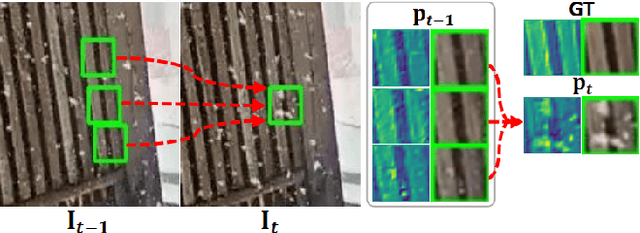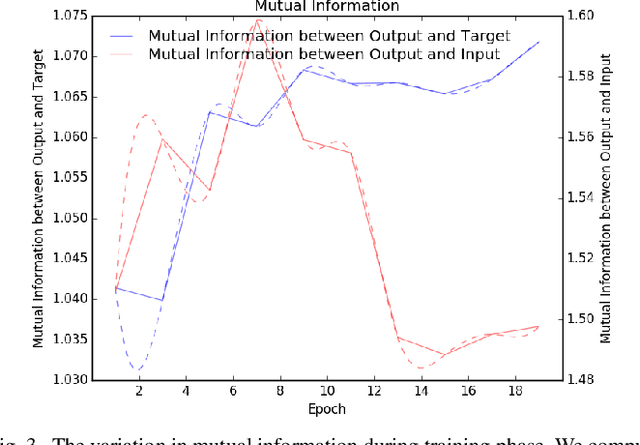Hongzhi Zhang
Zero-Shot Learning with Subsequence Reordering Pretraining for Compound-Protein Interaction
Jul 28, 2025Abstract:Given the vastness of chemical space and the ongoing emergence of previously uncharacterized proteins, zero-shot compound-protein interaction (CPI) prediction better reflects the practical challenges and requirements of real-world drug development. Although existing methods perform adequately during certain CPI tasks, they still face the following challenges: (1) Representation learning from local or complete protein sequences often overlooks the complex interdependencies between subsequences, which are essential for predicting spatial structures and binding properties. (2) Dependence on large-scale or scarce multimodal protein datasets demands significant training data and computational resources, limiting scalability and efficiency. To address these challenges, we propose a novel approach that pretrains protein representations for CPI prediction tasks using subsequence reordering, explicitly capturing the dependencies between protein subsequences. Furthermore, we apply length-variable protein augmentation to ensure excellent pretraining performance on small training datasets. To evaluate the model's effectiveness and zero-shot learning ability, we combine it with various baseline methods. The results demonstrate that our approach can improve the baseline model's performance on the CPI task, especially in the challenging zero-shot scenario. Compared to existing pre-training models, our model demonstrates superior performance, particularly in data-scarce scenarios where training samples are limited. Our implementation is available at https://github.com/Hoch-Zhang/PSRP-CPI.
RLEP: Reinforcement Learning with Experience Replay for LLM Reasoning
Jul 10, 2025Abstract:Reinforcement learning (RL) for large language models is an energy-intensive endeavor: training can be unstable, and the policy may gradually drift away from its pretrained weights. We present \emph{RLEP}\, -- \,Reinforcement Learning with Experience rePlay\, -- \,a two-phase framework that first collects verified trajectories and then replays them during subsequent training. At every update step, the policy is optimized on mini-batches that blend newly generated rollouts with these replayed successes. By replaying high-quality examples, RLEP steers the model away from fruitless exploration, focuses learning on promising reasoning paths, and delivers both faster convergence and stronger final performance. On the Qwen2.5-Math-7B base model, RLEP reaches baseline peak accuracy with substantially fewer updates and ultimately surpasses it, improving accuracy on AIME-2024 from 38.2% to 39.9%, on AIME-2025 from 19.8% to 22.3%, and on AMC-2023 from 77.0% to 82.2%. Our code, datasets, and checkpoints are publicly available at https://github.com/Kwai-Klear/RLEP to facilitate reproducibility and further research.
Evaluating Multimodal Large Language Models on Video Captioning via Monte Carlo Tree Search
Jun 11, 2025Abstract:Video captioning can be used to assess the video understanding capabilities of Multimodal Large Language Models (MLLMs). However, existing benchmarks and evaluation protocols suffer from crucial issues, such as inadequate or homogeneous creation of key points, exorbitant cost of data creation, and limited evaluation scopes. To address these issues, we propose an automatic framework, named AutoCaption, which leverages Monte Carlo Tree Search (MCTS) to construct numerous and diverse descriptive sentences (\textit{i.e.}, key points) that thoroughly represent video content in an iterative way. This iterative captioning strategy enables the continuous enhancement of video details such as actions, objects' attributes, environment details, etc. We apply AutoCaption to curate MCTS-VCB, a fine-grained video caption benchmark covering video details, thereby enabling a comprehensive evaluation of MLLMs on the video captioning task. We evaluate more than 20 open- and closed-source MLLMs of varying sizes on MCTS-VCB. Results show that MCTS-VCB can effectively and comprehensively evaluate the video captioning capability, with Gemini-1.5-Pro achieving the highest F1 score of 71.2. Interestingly, we fine-tune InternVL2.5-8B with the AutoCaption-generated data, which helps the model achieve an overall improvement of 25.0% on MCTS-VCB and 16.3% on DREAM-1K, further demonstrating the effectiveness of AutoCaption. The code and data are available at https://github.com/tjunlp-lab/MCTS-VCB.
DynTok: Dynamic Compression of Visual Tokens for Efficient and Effective Video Understanding
Jun 04, 2025Abstract:Typical video modeling methods, such as LLava, represent videos as sequences of visual tokens, which are then processed by the LLM backbone for effective video understanding. However, this approach leads to a massive number of visual tokens, especially for long videos. A practical solution is to first extract relevant visual information from the large visual context before feeding it into the LLM backbone, thereby reducing computational overhead. In this work, we introduce DynTok, a novel \textbf{Dyn}amic video \textbf{Tok}en compression strategy. DynTok adaptively splits visual tokens into groups and merges them within each group, achieving high compression in regions with low information density while preserving essential content. Our method reduces the number of tokens to 44.4% of the original size while maintaining comparable performance. It further benefits from increasing the number of video frames and achieves 65.3% on Video-MME and 72.5% on MLVU. By applying this simple yet effective compression method, we expose the redundancy in video token representations and offer insights for designing more efficient video modeling techniques.
Modality Curation: Building Universal Embeddings for Advanced Multimodal Information Retrieval
May 26, 2025Abstract:Multimodal information retrieval (MIR) faces inherent challenges due to the heterogeneity of data sources and the complexity of cross-modal alignment. While previous studies have identified modal gaps in feature spaces, a systematic approach to address these challenges remains unexplored. In this work, we introduce UNITE, a universal framework that tackles these challenges through two critical yet underexplored aspects: data curation and modality-aware training configurations. Our work provides the first comprehensive analysis of how modality-specific data properties influence downstream task performance across diverse scenarios. Moreover, we propose Modal-Aware Masked Contrastive Learning (MAMCL) to mitigate the competitive relationships among the instances of different modalities. Our framework achieves state-of-the-art results on multiple multimodal retrieval benchmarks, outperforming existing methods by notable margins. Through extensive experiments, we demonstrate that strategic modality curation and tailored training protocols are pivotal for robust cross-modal representation learning. This work not only advances MIR performance but also provides a foundational blueprint for future research in multimodal systems. Our project is available at https://friedrichor.github.io/projects/UNITE.
TUNA: Comprehensive Fine-grained Temporal Understanding Evaluation on Dense Dynamic Videos
May 26, 2025Abstract:Videos are unique in their integration of temporal elements, including camera, scene, action, and attribute, along with their dynamic relationships over time. However, existing benchmarks for video understanding often treat these properties separately or narrowly focus on specific aspects, overlooking the holistic nature of video content. To address this, we introduce TUNA, a temporal-oriented benchmark for fine-grained understanding on dense dynamic videos, with two complementary tasks: captioning and QA. Our TUNA features diverse video scenarios and dynamics, assisted by interpretable and robust evaluation criteria. We evaluate several leading models on our benchmark, providing fine-grained performance assessments across various dimensions. This evaluation reveals key challenges in video temporal understanding, such as limited action description, inadequate multi-subject understanding, and insensitivity to camera motion, offering valuable insights for improving video understanding models. The data and code are available at https://friedrichor.github.io/projects/TUNA.
Clapper: Compact Learning and Video Representation in VLMs
May 21, 2025Abstract:Current vision-language models (VLMs) have demonstrated remarkable capabilities across diverse video understanding applications. Designing VLMs for video inputs requires effectively modeling the temporal dimension (i.e. capturing dependencies across frames) and balancing the processing of short and long videos. Specifically, short videos demand preservation of fine-grained details, whereas long videos require strategic compression of visual information to handle extensive temporal contexts efficiently. However, our empirical analysis reveals a critical limitation: most existing VLMs suffer severe performance degradation in long video understanding tasks when compressing visual tokens below a quarter of their original visual tokens. To enable more effective modeling of both short and long video inputs, we propose Clapper, a method that utilizes a slow-fast strategy for video representation and introduces a novel module named TimePerceiver for efficient temporal-spatial encoding within existing VLM backbones. By using our method, we achieves 13x compression of visual tokens per frame (averaging 61 tokens/frame) without compromising QA accuracy. In our experiments, Clapper achieves 62.0% on VideoMME, 69.8% on MLVU, and 67.4% on TempCompass, all with fewer than 6,000 visual tokens per video. The code will be publicly available on the homepage.
Pseudo-Label Guided Real-World Image De-weathering: A Learning Framework with Imperfect Supervision
Apr 14, 2025



Abstract:Real-world image de-weathering aims at removingvarious undesirable weather-related artifacts, e.g., rain, snow,and fog. To this end, acquiring ideal training pairs is crucial.Existing real-world datasets are typically constructed paired databy extracting clean and degraded images from live streamsof landscape scene on the Internet. Despite the use of strictfiltering mechanisms during collection, training pairs inevitablyencounter inconsistency in terms of lighting, object position, scenedetails, etc, making de-weathering models possibly suffer fromdeformation artifacts under non-ideal supervision. In this work,we propose a unified solution for real-world image de-weatheringwith non-ideal supervision, i.e., a pseudo-label guided learningframework, to address various inconsistencies within the realworld paired dataset. Generally, it consists of a de-weatheringmodel (De-W) and a Consistent Label Constructor (CLC), bywhich restoration result can be adaptively supervised by originalground-truth image to recover sharp textures while maintainingconsistency with the degraded inputs in non-weather contentthrough the supervision of pseudo-labels. Particularly, a Crossframe Similarity Aggregation (CSA) module is deployed withinCLC to enhance the quality of pseudo-labels by exploring thepotential complementary information of multi-frames throughgraph model. Moreover, we introduce an Information AllocationStrategy (IAS) to integrate the original ground-truth imagesand pseudo-labels, thereby facilitating the joint supervision forthe training of de-weathering model. Extensive experimentsdemonstrate that our method exhibits significant advantageswhen trained on imperfectly aligned de-weathering datasets incomparison with other approaches.
Routing to the Right Expertise: A Trustworthy Judge for Instruction-based Image Editing
Apr 10, 2025Abstract:Instruction-based Image Editing (IIE) models have made significantly improvement due to the progress of multimodal large language models (MLLMs) and diffusion models, which can understand and reason about complex editing instructions. In addition to advancing current IIE models, accurately evaluating their output has become increasingly critical and challenging. Current IIE evaluation methods and their evaluation procedures often fall short of aligning with human judgment and often lack explainability. To address these limitations, we propose JUdgement through Routing of Expertise (JURE). Each expert in JURE is a pre-selected model assumed to be equipped with an atomic expertise that can provide useful feedback to judge output, and the router dynamically routes the evaluation task of a given instruction and its output to appropriate experts, aggregating their feedback into a final judge. JURE is trustworthy in two aspects. First, it can effortlessly provide explanations about its judge by examining the routed experts and their feedback. Second, experimental results demonstrate that JURE is reliable by achieving superior alignment with human judgments, setting a new standard for automated IIE evaluation. Moreover, JURE's flexible design is future-proof - modular experts can be seamlessly replaced or expanded to accommodate advancements in IIE, maintaining consistently high evaluation quality. Our evaluation data and results are available at https://github.com/Cyyyyyrus/JURE.git.
Small Molecule Drug Discovery Through Deep Learning:Progress, Challenges, and Opportunities
Feb 13, 2025Abstract:Due to their excellent drug-like and pharmacokinetic properties, small molecule drugs are widely used to treat various diseases, making them a critical component of drug discovery. In recent years, with the rapid development of deep learning (DL) techniques, DL-based small molecule drug discovery methods have achieved excellent performance in prediction accuracy, speed, and complex molecular relationship modeling compared to traditional machine learning approaches. These advancements enhance drug screening efficiency and optimization, and they provide more precise and effective solutions for various drug discovery tasks. Contributing to this field's development, this paper aims to systematically summarize and generalize the recent key tasks and representative techniques in DL-based small molecule drug discovery in recent years. Specifically, we provide an overview of the major tasks in small molecule drug discovery and their interrelationships. Next, we analyze the six core tasks, summarizing the related methods, commonly used datasets, and technological development trends. Finally, we discuss key challenges, such as interpretability and out-of-distribution generalization, and offer our insights into future research directions for DL-assisted small molecule drug discovery.
 Add to Chrome
Add to Chrome Add to Firefox
Add to Firefox Add to Edge
Add to Edge